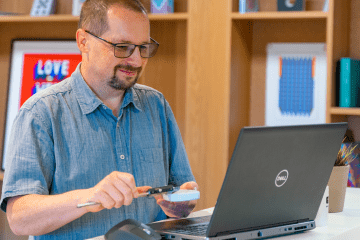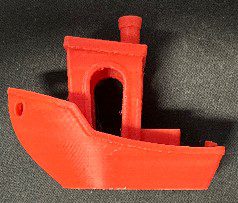 This case study demonstrates a design scenario for a moderately complex product. From the first quotation through to delivering production-ready engineering drawings.
This case study demonstrates a design scenario for a moderately complex product. From the first quotation through to delivering production-ready engineering drawings.
Our basic process for new clients is:
- Initial meeting
- Quotation
- 50% Pro-forma invoice
- Deliver the first stage of the project
- Final Invoice
- If we complete a project in less time than quoted, the final invoice will be reduced accordingly. Around 50% of our clients receive a small reduction on their second invoice.
- If the scope of the project does not change, we will NEVER charge more than we quoted.
- If the project scope changes (as it often does) we will inform the client and either agree on an additional fee for the new scope or complete the project to the current scope and introduce the change in the next body of work.
 In the following scenario, we were approached by a client who had identified a gap in the market for a new product. Client confidentiality restricts us from sharing any details from real projects, so we have included some of our stock design images for the purpose of this example.
In the following scenario, we were approached by a client who had identified a gap in the market for a new product. Client confidentiality restricts us from sharing any details from real projects, so we have included some of our stock design images for the purpose of this example.
The initial idea was presented to us in the form of a rough sketch and we were asked to quote to create a top-level (low detail) 3D CAD model of the concept. This would allow them to pitch the idea to potential investors.
During the initial meeting we discussed:
- Design requirements.
- Purpose of the idea.
- Material options.
- Manufacturing options.
- Protecting intellectual property.
We used all this information to help us put together our quotation.
Quotation: 4 hours design time @ £40 per hour (+VAT)
Deliverables: 3D CAD models + renders.
First Invoice: 2 hours design time @ £40 (Pro-forma)
We ask for a 50% pro-forma payment from all new clients. This payment is to be made before we start work on the project. We also let the client know that if the design takes less time than we quoted, we would pass this saving onto them in their next invoice. The only exception to this is if the scope of the project changes. However, if the scope does not change we will not charge more than our quotation, even if the design takes longer than we quoted.
We use this approach with all new clients as we feel it helps to build trust on both sides.
 Once the Pro-forma invoice has been paid, we start working on the design. After we present the client with the first early images of the 3D CAD model, there were some discussions regarding changes to the original concept. We had used around 50% of the quoted time at this stage and said to the client, “This is a small change of scope, but we have not taken as long as expected to get to the stage we are at.” This meant that there was scope within the original quotation for a small change.
Once the Pro-forma invoice has been paid, we start working on the design. After we present the client with the first early images of the 3D CAD model, there were some discussions regarding changes to the original concept. We had used around 50% of the quoted time at this stage and said to the client, “This is a small change of scope, but we have not taken as long as expected to get to the stage we are at.” This meant that there was scope within the original quotation for a small change.
Product design is rarely a linear process…. We often find that as the original concept develops, clients have ideas for improvements or additional features, as they start to see the product becoming even better than they first imagined.
This is the nature of product design….
When we presented the second set of designs to the client, they saw several more opportunities to improve the original concept, making the product even better than they had first considered. The changes requested were going to take more design time than was left in the project. This was discussed with the client, giving them the option of either completing the project as far as possible within the original quotation, without going over the original cost or embracing the change of scope and adding some more design time to the project to allow all the new features to be added. The client asked us to use the remaining time to update the design as far as possible without causing additional cost. With the design updated, it was agreed that we could send our second invoice for this project.
Second Invoice: 2 hours of design time @ £40 (+VAT)
Our client now had 3D CAD models and renders that could be used to pitch their improved idea to potential investors. We had started to build a relationship with our client, trust was growing on both sides. The client was happy with the quality of work we had delivered and was pleased we had listened to their ideas and suggestions.
 The plan at this point was for the client to demonstrate the CAD models and renders to potential investors in the hope of securing funding for the rest of the project. Feedback received from potential investors indicated the product had potential. The investment was secured and several design opportunities were identified to increase the appeal to potential customers.
The plan at this point was for the client to demonstrate the CAD models and renders to potential investors in the hope of securing funding for the rest of the project. Feedback received from potential investors indicated the product had potential. The investment was secured and several design opportunities were identified to increase the appeal to potential customers.
After discussing the new requirements with the client, a plan was put together to help us move the project forward. It was agreed that instead of constraining the second phase of the project with a quotation, White Horse CAD would give a “Ball Park” cost with a potential “Worst Case” upper limit, giving an indication of the maximum project spend. We considered the required changes, the potential requests for further changes, and a new requirement for engineering drawings. The client was advised the additional work would take between 10-15 hours. It was agreed to spread this over several days with approvals being sought from all partners before starting on the engineering drawings.
 The second design iteration took a further 4 hours of design time. This design was presented to all the project partners for a final round of modifications. The third and final design iteration took an additional 2 hours of design work.
The second design iteration took a further 4 hours of design time. This design was presented to all the project partners for a final round of modifications. The third and final design iteration took an additional 2 hours of design work.
With the final design now agreed it was time to start on the engineering drawings. These took around 4 hours to complete. We had now spent an additional 10 hours of design time, well within our worst-case “Ball Park” pricing.
Final Invoice: 10 Hours of design time @ £40 (+VAT) per hour
Deliverables:
- Native CAD Data (upon payment of final invoice).
- 6 Engineering Drawings.
- 3D CAD data (STEP & DXF files) to help manufacture.
- Screenshots and renders.
Total Cost of Product Development:
Invoice 1: £80 (+VAT)
Invoice 2: £80
Final Invoice: £400
Total: £560 (+VAT)
This case study demonstrates the White Horse CAD design process and gives an indication of a project cost that has changed as an evolving design develops.
This is the nature of product development. Sometimes things are straight forward and there is no change of scope from the outset. Sometimes products that appear simple in the first instance grow to become more than first envisaged.
The secret of good product design is knowing when to stop making changes and start making product…
 Of course, this is not the end of the product design story…. The next stage is prototyping, followed by testing to prove compliance with any relevant standards. This could be followed by further design changes. Then of course there will be protecting intellectual property, production planning, tooling design, fixture design, packaging design, etc. Once all these have been considered you will be ready to release your new product.
Of course, this is not the end of the product design story…. The next stage is prototyping, followed by testing to prove compliance with any relevant standards. This could be followed by further design changes. Then of course there will be protecting intellectual property, production planning, tooling design, fixture design, packaging design, etc. Once all these have been considered you will be ready to release your new product.
Decades of design and manufacturing expertise give White Horse CAD a unique understanding of the complexities of product development. We have worked with many different industries from the highly regulated orthopaedic sector through to artisans and makers. We will work with you to overcome all your design challenges.
Want more information?
If you would like to know more about our product design service please use our contact page. if you would like to read our blog posts as soon as they are released, why not sign up for our FREE newsletter.



You must be logged in to post a comment.